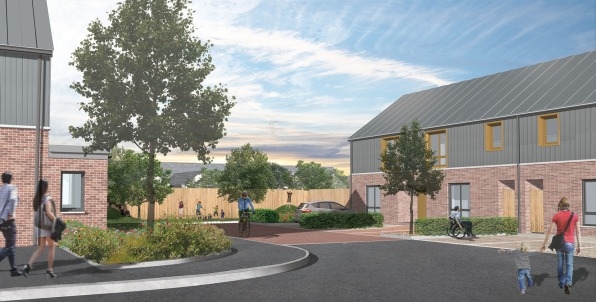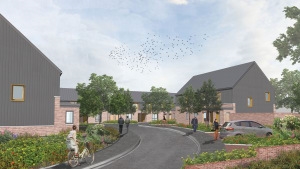In This New Neighborhood, All The Houses Are Their Own Power Stations
A new housing development in the small U.K. town of Neath won’t look much different from the buildings around it. But the new homes will generate, store, and release their own energy, and if the pilot is successful, the design could be rolled out on a mass scale, helping avoid the need to build new power plants.
“We call it ‘buildings as power stations,’” says Kevin Bygate, chief executive of Specific, a U.K. innovation center based at Swansea University in Wales that was set up to help close the gap between energy innovation and implementation. The houses will be developed by the Pobl Group, which provides social housing.
While all of the technology used is commercially available now, the homes attempt to combine it in a way that’s cost-effective to roll out at scale. The buildings in the new development–a mix of 16 one, two, and three-bedroom houses and one-bedroom apartments–are laid out to maximize the solar power they can generate through solar roofs and solar collectors on walls. Wrapping around the top of the homes, a perforated steel skin creates a pocket of heated air as the sun shines on it, which can be drawn into the homes for heat. Shared battery storage holds excess electricity until it’s needed in the homes or to charge electric cars.

The houses may be 10%-20% more expensive to build than similar conventional homes, but the researchers expect that cost to decrease as technology continues to improve. They can also provide immediate savings on energy bills for the low-income residents who will live in them, trimming bills by an average of at least £600 [$768] a year. After the pilot is completed in Neath, the same partners hope to build another 1,200 energy-positive houses in the area. In a new study, researchers analyzed what the benefits could be if one million similar homes were built in the U.K.
“You would reduce the need for central energy generating stations by around three gigawatts, which is equivalent to a large nuclear power station,” Bygate says. “In a sense, what that means is you could get a nuclear power station for free. Essentially, the argument is in the U.K. we’re going to build lots more buildings anyway, and we’re going to finance them anyway. If you build them in a smart way and they’re energy positive, then actually you reduce the demand for central power stations. That’s worth at least £11 billion [$14 billion] in the U.K., and maybe more.”
While the U.K., like other countries, is also building large-scale renewable power plants–including the largest offshore wind farm in the world, where 640-foot wind turbines generate enough power for 230,000 homes–Bygate argues that it’s most efficient to produce power directly on houses.
“If you make energy for free at the point you need it, that should be the best, most economical answer, because there’s no transmission losses,” he says. “If you produce something in a power station and transmit it from there to somewhere else, it costs you money to do that transporting–the grid doesn’t come for free.”
The homes would still be connected to the grid so excess energy could also be sent to it. The study calculated that residents would save a minimum of 60% on energy bills, but if the houses also earn money by selling extra power to the grid, that savings could increase to around 85%. While the houses produce excess energy over the course of a year, they would still occasionally need to pull power from the grid, particularly on cold days for heat; as technology improves, however, that may not be necessary. The researchers have tested a system that can affordably store heat in the summer for use in the winter, for example. In cold climates like Wales, the largest carbon footprint from energy use comes from heating, rather than electricity.
The study calculated that one million homes using the technology would reduce CO2 emissions by nearly 80 million tonnes over 40 years. While the project team is focused locally, they say the same system could be used anywhere around the world, particularly places that don’t have Britain’s gloomy weather. “We thought if we can get it working in the U.K., we should be able to get it working anywhere,” says Bygate. “Lots of places in the world should have twice the solar radiation that we have here.” In developing countries, similar homes might be able to exist without an electrical grid. In the most polluting countries, the design–which could also be retrofitted to existing houses–could help dramatically cut climate pollution.
“The biggest single user of energy is buildings,” says Bygate. “If you can get buildings generating, storing, and releasing their own energy, then that is a game-changer.”
Fast Company , Read Full Story
(57)













